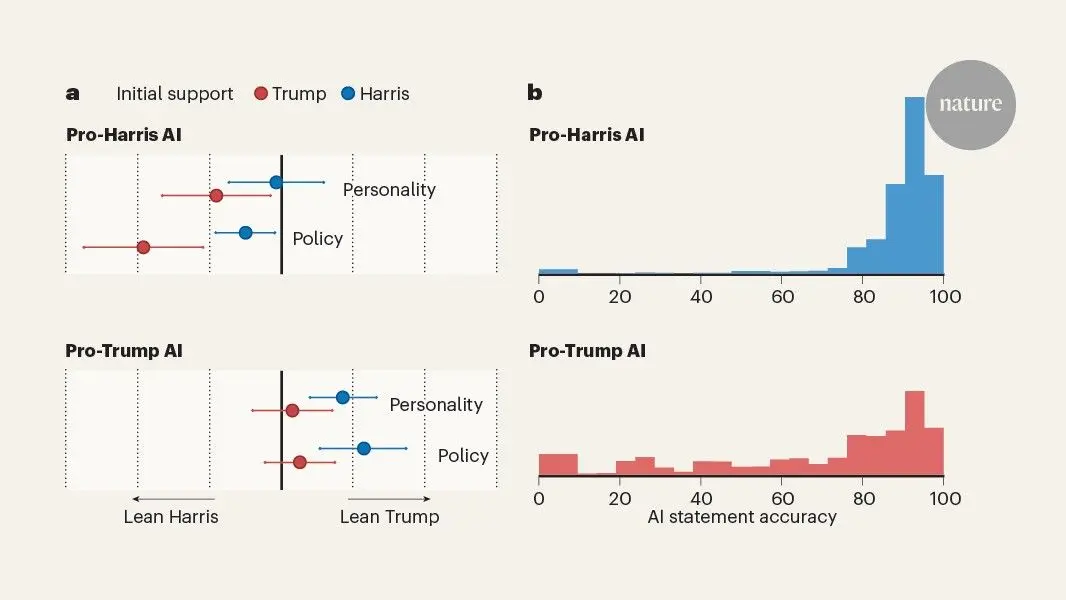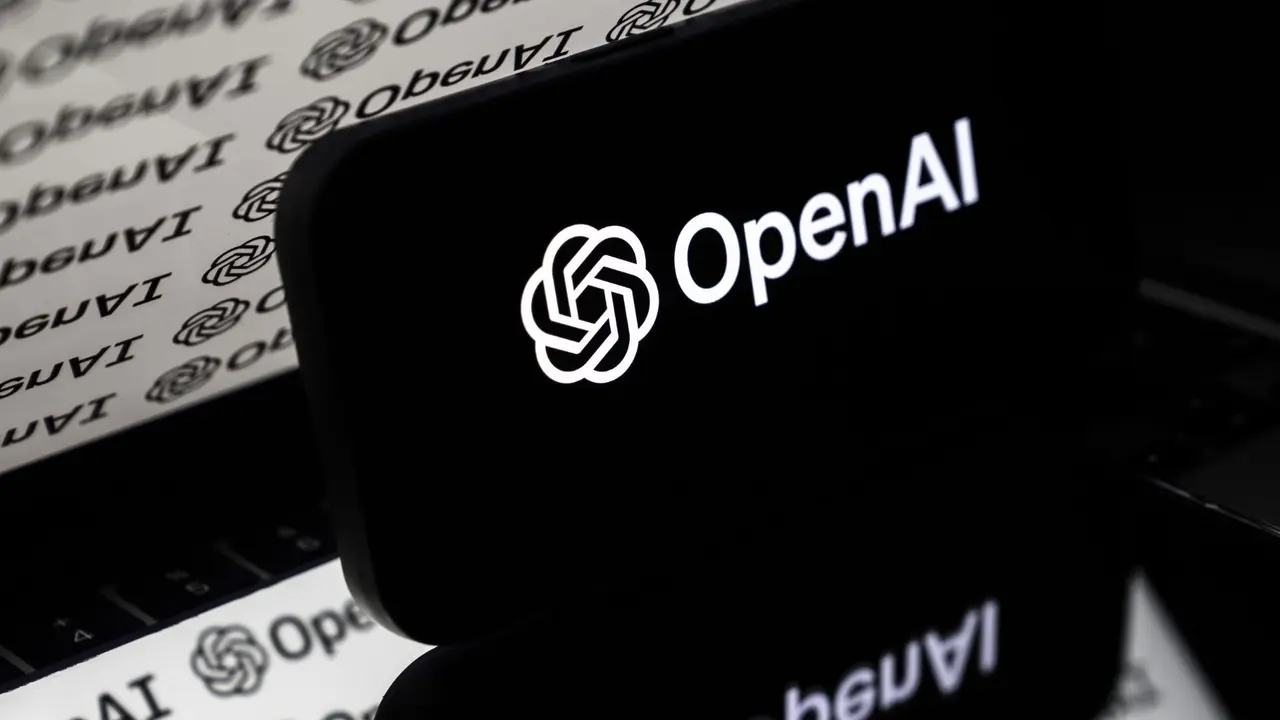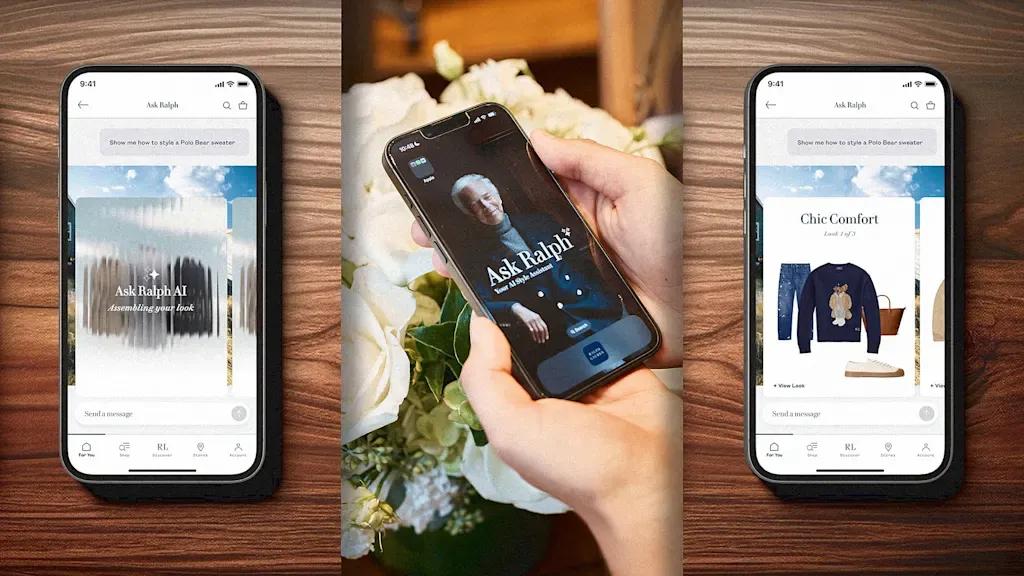AI Revolutionizes the Fashion Industry: From Design to Sustainability
2 Sources
2 Sources
[1]
Artificial intelligence is about to radically change the landscape of the fashion industry
Fashion is a dynamic sector. Most clothing brands earn at least two to four collections per year. When marketing current seasonal collections, brands plan the next ones at least a year in advance, identifying market trends and materials. The sales window is about three months and unsold inventory represents a financial loss. Fast fashion companies are introducing new lines even more frequently, reducing the time it takes to design, produce and market new items. Technology and fashion The fashion industry has a history of pushing the boundaries of technology. Some of the most significant technological advances include laser cutting, computer-aided design, and more recently, the use of 3D printing in early 2010. The fashion industry has been experimenting with Basic AI and other cutting-edge technologies. An example is the Gucci gardenthe labels' collaboration with virtual world platform Roblox in May 2021 to celebrate the brand's centenary. Non-fungible tokens (NFTs) are another area of innovation, as shown in the Dolce & Gabbana Genesis Collection in collaboration with UNXD, a luxury digital marketplace. This collection was sold for 6 million US dollars, set NFT sales record. Fashion companies are also using blockchains for product authentication, traceability and digital identifiers, among others. those integrated by LVMH/Louis Vuittonauthentication and traceability of products. Additionally, businesses have integrated augmented reality into their marketing and retail strategies to create immersive and interactive customer experiences. Revolutionary technology In 2021, fashion companies invested between 1.6 and 1.8 percent of their revenues in technologyBy 2030, this figure is expected to increase to between 3 and 3.5%. Generative AI could be a game changer for the fashion industry, adding between $150 billion and $250 billion operating profits within three to five yearsAlthough the fashion industry is only just beginning to integrate AI, the opportunities and challenges it presents are evident across all business processes. Generative AI could help fashion companies improve their processes, get products to market faster, sell more efficiently, and improve the customer experience. Generative AI could also support product development by analyzing large datasets from social media and runway shows to identify emerging fashion trends. Este Lauder Companies and Microsoft have partnered to open a internal AI innovation lab to identify and respond to trends, inform product development and improve the customer experience. Designers could use AI to visualize different materials and patterns based on consumers' past preferences. For example, Tommy Hilfiger is collaborating with IBM and the Fashion Institute of Technology in New York on the Reimagine Retail Projectwhich uses AI to analyze consumer data and design new fashion collections. Designers can also convert sketches and mood boards into 3D designs and 3D print them to speed up prototyping. Iris van Herpen, a Dutch fashion designer, used AI to imagine and execute the visuals of its fall/winter 2023 collection. AI and sustainability AI is helping to create more sustainable fashion practices by optimizing resource use, recycling materials, and reducing waste through more precise manufacturing processes and efficient supply chain and inventory management. For example, H&M uses AI to improve recycling processessort and categorize clothes to recycle them and promote a circular fashion economy. AI can improve supply chain operations and processes by optimizing inventory management, predicting sales based on historical data, and reducing overstocks and stockouts. Brands like Zara and H&M are already using AI to control supply chainspromoting sustainability by optimizing stock levels and reducing waste. Zara also introduces AI and robotics in their retail stores to speed up the pickup of online orders. AI-powered virtual try-on solutions allow customers to see what clothes will look like without physically trying them on, improving the online shopping experience and reducing return rates. Virtual try-ons are already a reality in digital businesses, such as eyeglass retailer Warby Parker And Amazon. Another example is Amendedacquired by French multinational personal care company LOral in 2018, which offers augmented reality-based virtual try-ons for makeup and fashion accessories. An effective campaign AI can also deliver personalized customer experiences. Some brands, like Reebok and Versaceinvite their customers to use AI tools to design products inspired by the look and feel of brands. AI-powered tools can help marketing teams target and maximize the impact of their communications campaigns, potentially reducing marketing costs. The fashion industry spans from small businesses to global chains, from haute couture to ready-to-wear, mass market and fast fashion. Every brand needs to understand where AI can drive value for their business without diluting their brand identity. The biggest challenge, however, is to avoid homogenization. Generative AI should not replace human creativity, but create new spaces and processes. Creativity and innovation remain the soul and heart of any fashion brand, and AI must be a tool to enhance and support them. As fashion designer Hussein Chalayan said, fashion will be renewed thanks to technology, new fibers, new ways of making clothes. The Pitfalls of AI Fashion companies must be prepared to manage the risks associated with new technologies, particularly with regard to intellectual property, creative rights and brand reputation. One of the main issues is the potential infringement of intellectual property related to training data. GenAI models are trained on large design datasets, often containing copyrighted works. This can lead to legal disputes originality and appropriationA related risk is that of bias and fairness in generative AI systems, which can present reputational issues for brands that rely on this technology. Another concern is the ambiguity surrounding creative rights in the age of AI. It's difficult to determine who owns the creative rights to a design -- whether it's the designer who conceptualized the idea, the developer who created the AI, or the AI itself. This ambiguity can dilute the authenticity of a brand's creative expression, which can harm its reputation if consumers perceive the brand as less innovative or authentic.
[2]
Artificial intelligence is poised to radically disrupt the fashion industry landscape
Simon Fraser University provides funding as a member of The Conversation CA-FR. Fashion is a dynamic business. Most apparel brands make at least two to four collections per year. While selling current seasonal collections, brands plan for the next ones at least a year in advance, identifying market trends and materials. The selling window is around three months, and unsold inventories represent financial loss. Fast fashion companies introduce new lines even more frequently, reducing the amount of time needed to design, produce and market new items. Tech and fashion The fashion industry is familiar with experimenting with technological frontiers. Some of the most significant technological breakthrough are laser cutting, computer-aided design and more recently, the use of 3D printing in early 2010. The fashion industry has experimented with basic AI and other cutting-edge technologies. One example is the Gucci Garden, the label's collaboration with virtual world platform Roblox in May 2021 to celebrate the brand's centennial. Non-fungible tokens (NFTs) are another area of innovation, as seen with the Dolce & Gabbana Genesi Collection in collaboration with UNXD, a digital luxury marketplace. This collection sold for US$6 million, setting a record for NFT sales. Fashion companies also use blockchains for product authentication, traceability and digital IDs, including those integrated by LVMH/Louis Vuitton, product authentication and traceability. Additionally, companies have incorporated augmented reality into marketing and retail strategies to create immersive and interactive customer experiences. Game-changing technology In 2021, fashion companies invested between 1.6 and 1.8 per cent of their revenues in technology. By 2030, that figure is expected to rise to between three and 3.5 per cent. Generative AI could become a game-changer for the fashion industry, adding between US$150 and US$250 billion to operating profits within three to five years. While the fashion sector has only started integrating AI, the opportunities and challenges it presents are evident across all business processes. Generative AI could help fashion companies improve their processes, bring their products to the market faster, sell more efficiently and improve customer experience. Generative AI could also support product development by analyzing large social media and runway show datasets to identify emerging fashion trends. Estée Lauder Companies and Microsoft have teamed up to open an in-house AI innovation lab for identifying and responding to trends, informing product development and improving customer experiences. Designers could use AI to visualize different materials and patterns based on past consumer preferences. For example, the Tommy Hilfiger Corporation is collaborating with IBM and the Fashion Institute of Technology in New York on the Reimagine Retail project, which uses AI to analyze consumer data and design new fashion collections. Designers can also convert sketches and mood boards into 3D designs and 3D print them to speed up prototyping. Iris van Herpen, a Dutch fashion designer, used AI to imagine and execute the visuals of her fall/winter 2023 collection. AI and sustainability AI helps in creating more sustainable fashion practices by optimizing the use of resources, recycling materials and reducing waste through more precise manufacturing processes and efficient supply chain and inventory management. For example, H&M uses AI to improve its recycling processes, sort and categorize garments for recycling and promote a circular fashion economy. AI can improve operations and supply chain processes by optimizing inventory management, predicting sales based on historical data, and reducing overstock and stock-outs. Brands like Zara and H&M already use AI to control supply chains, promoting sustainability by optimizing stock levels and reducing waste. Zara also introduced AI and robotics into their retail stores to speed up online order pick-ups. AI-powered virtual try-on solutions allow customers to see how clothes will look on them without physically trying them, enhancing the online shopping experience and reducing return rates. Virtual try-ons are already a reality in digital companies, such as prescription eyewear retailer Warby Parker and Amazon. Another example is Modiface, acquired by French multinational personal care company L'Oréal in 2018, which provides AR-based virtual try-ons for makeup and fashion accessories. Effective campaigning AI can also deliver customized customer experiences. Some brands, such as Reebok and Versace, invite their customers to use AI tools to design products inspired by the brand's feel and look. AI-powered tools can help marketing teams target and maximize the impact of their communication campaigns, potentially reducing marketing costs. The fashion business includes everything from small companies to global chains, haute couture to ready-to-wear, mass market and fast fashion. Each brand must understand where AI could generate value for their business without diluting their brand identity. The biggest challenge, however, is to avoid homogenization. Generative AI should not replace human creativity but create new spaces and processes. Creativity and innovation remain the soul and heart of any fashion brand, and AI should be a tool to enhance and support them. As fashion designer Hussein Chalayan has said, "fashion will renew itself through technology, new fibers, new ways of making clothes." AI pitfalls Fashion companies should be prepared to manage the associated risks with new technologies, particularly regarding intellectual property, creative rights and brand reputation. One of the primary issues is the potential infringement of intellectual property related to training data. GenAI models are trained on vast design datasets, often containing copyrighted works. This can lead to legal disputes over originality and ownership. A related risk is bias and fairness in generative-AI systems, which may present reputational challenges for brands that rely on the technology. The ambiguity surrounding creative rights in the age of AI is another concern. It's challenging to determine who holds the creative rights to a design, whether it's the designer who conceptualized the idea, the developer who built the AI or the AI itself. This ambiguity can dilute the authenticity of a brand's creative expression, potentially harming its reputation if consumers perceive the brand as less innovative or authentic.
Share
Share
Copy Link
Artificial Intelligence is transforming the fashion industry, impacting various aspects from design and manufacturing to sustainability and personalization. This technological revolution is reshaping how fashion brands operate and interact with consumers.

AI's Growing Influence in Fashion
The fashion industry is undergoing a significant transformation, with Artificial Intelligence (AI) emerging as a game-changing force. From design conceptualization to sustainable practices, AI is revolutionizing every facet of the fashion landscape
1
.Enhancing Design and Creativity
AI is not replacing human creativity but augmenting it. Design tools powered by AI are enabling fashion designers to explore new realms of creativity. These tools can generate unique patterns, color combinations, and even entire clothing designs based on input parameters and trending data
2
.Streamlining Manufacturing and Supply Chain
In the manufacturing sector, AI is optimizing processes and reducing waste. Predictive analytics are being employed to forecast demand more accurately, allowing for better inventory management and reduced overproduction. This not only cuts costs but also addresses the industry's sustainability concerns
1
.Personalizing Customer Experiences
AI-driven algorithms are revolutionizing the way consumers interact with fashion brands. Virtual try-on technologies and personalized recommendations based on individual preferences and body types are enhancing the online shopping experience. This level of personalization is helping brands to build stronger connections with their customers
2
.Addressing Sustainability Challenges
The fashion industry has long grappled with sustainability issues. AI is now being leveraged to create more sustainable practices. From developing eco-friendly materials to optimizing production processes to reduce waste, AI is playing a crucial role in making the fashion industry more environmentally responsible
1
.Related Stories
Reshaping Marketing Strategies
AI-powered tools are transforming marketing strategies in the fashion industry. By analyzing vast amounts of data, including social media trends and consumer behavior, AI is helping brands to create more targeted and effective marketing campaigns. This data-driven approach is leading to improved customer engagement and increased sales
2
.The Future of Fashion Retail
As AI continues to evolve, its impact on fashion retail is expected to grow. Virtual and augmented reality technologies, coupled with AI, are set to create immersive shopping experiences. These technologies could potentially bridge the gap between online and offline retail, offering customers the best of both worlds
1
.Challenges and Considerations
While the potential of AI in fashion is immense, it also raises important questions. Issues of data privacy, the potential loss of traditional skills, and the need for reskilling in the workforce are some of the challenges that the industry needs to address as it embraces this technological revolution
2
.References
Summarized by
Navi
[1]
Related Stories
Recent Highlights
1
AI Chatbots Sway Voters More Effectively Than Traditional Political Ads, New Studies Reveal
Science and Research

2
Trump signs executive order to override state AI laws despite bipartisan pushback
Policy and Regulation

3
OpenAI warns upcoming AI models will likely pose high cybersecurity risk with zero-day exploits
Technology








